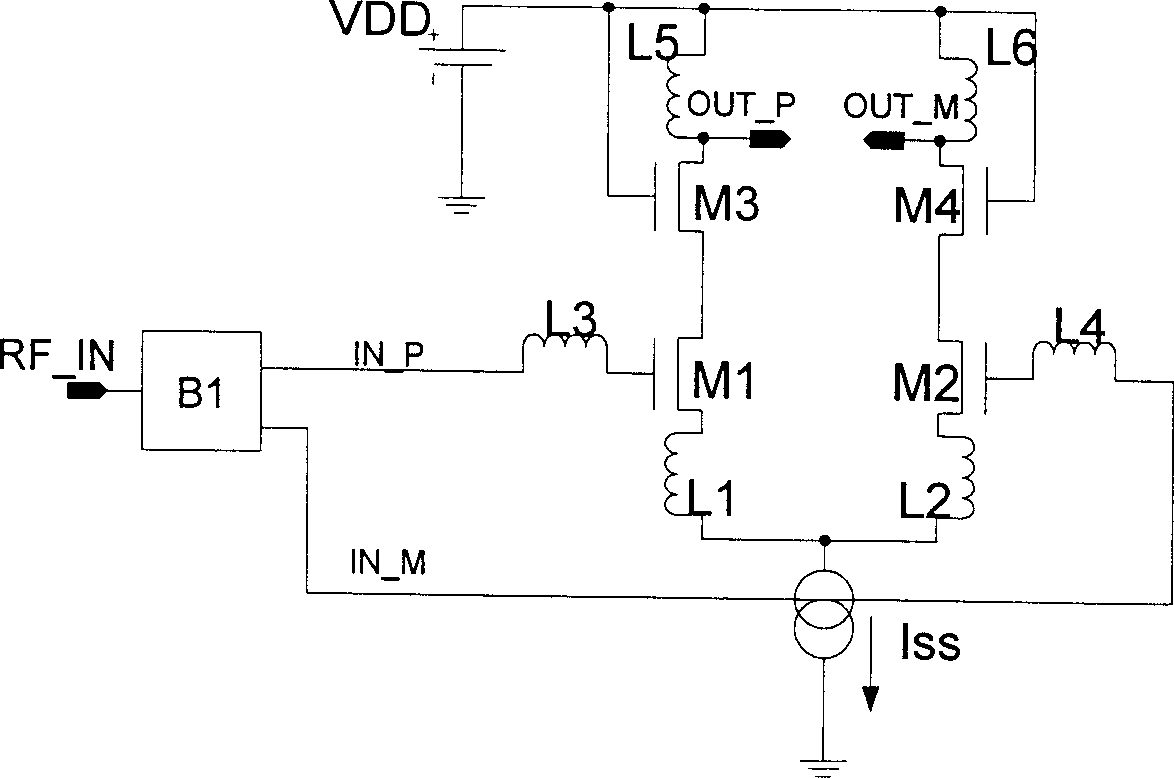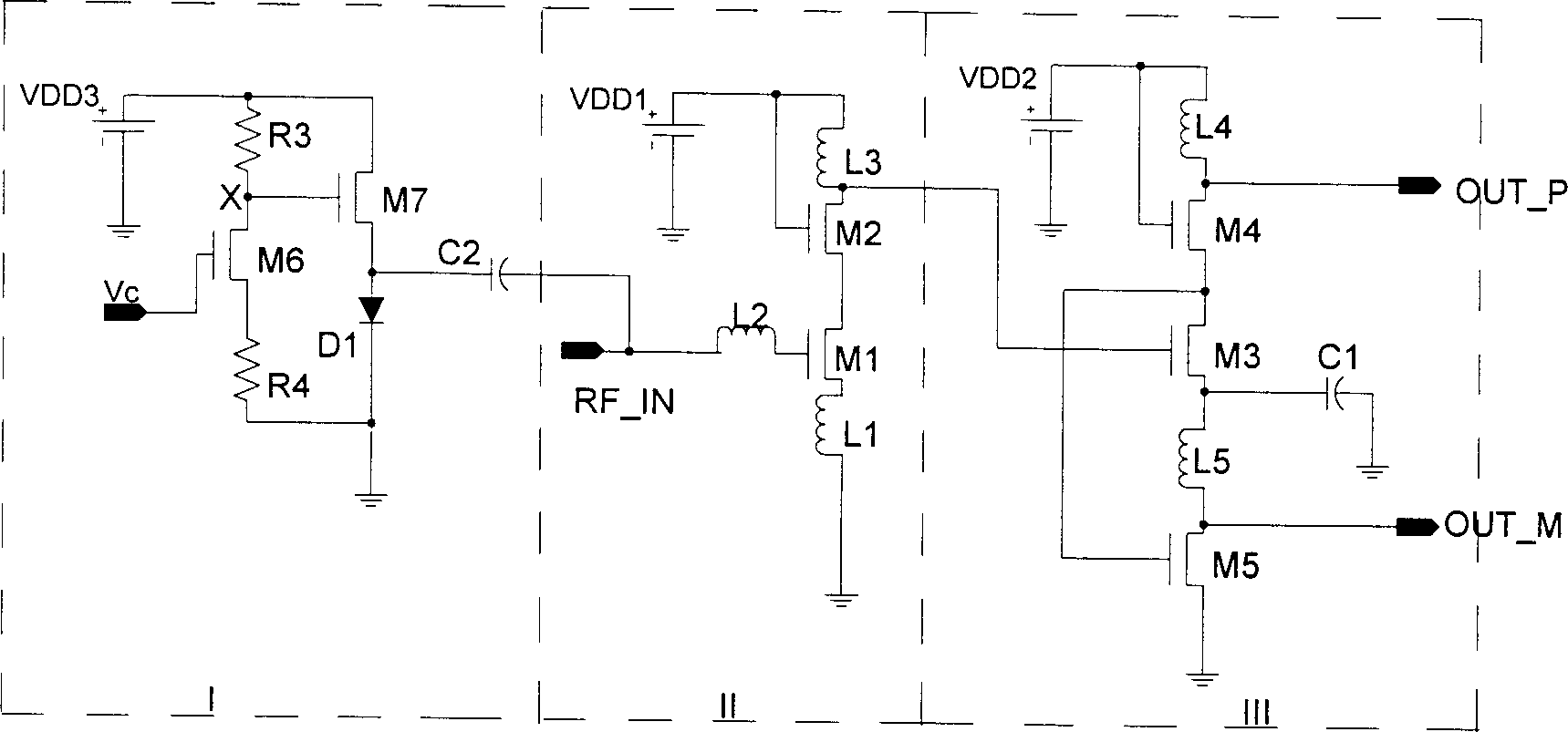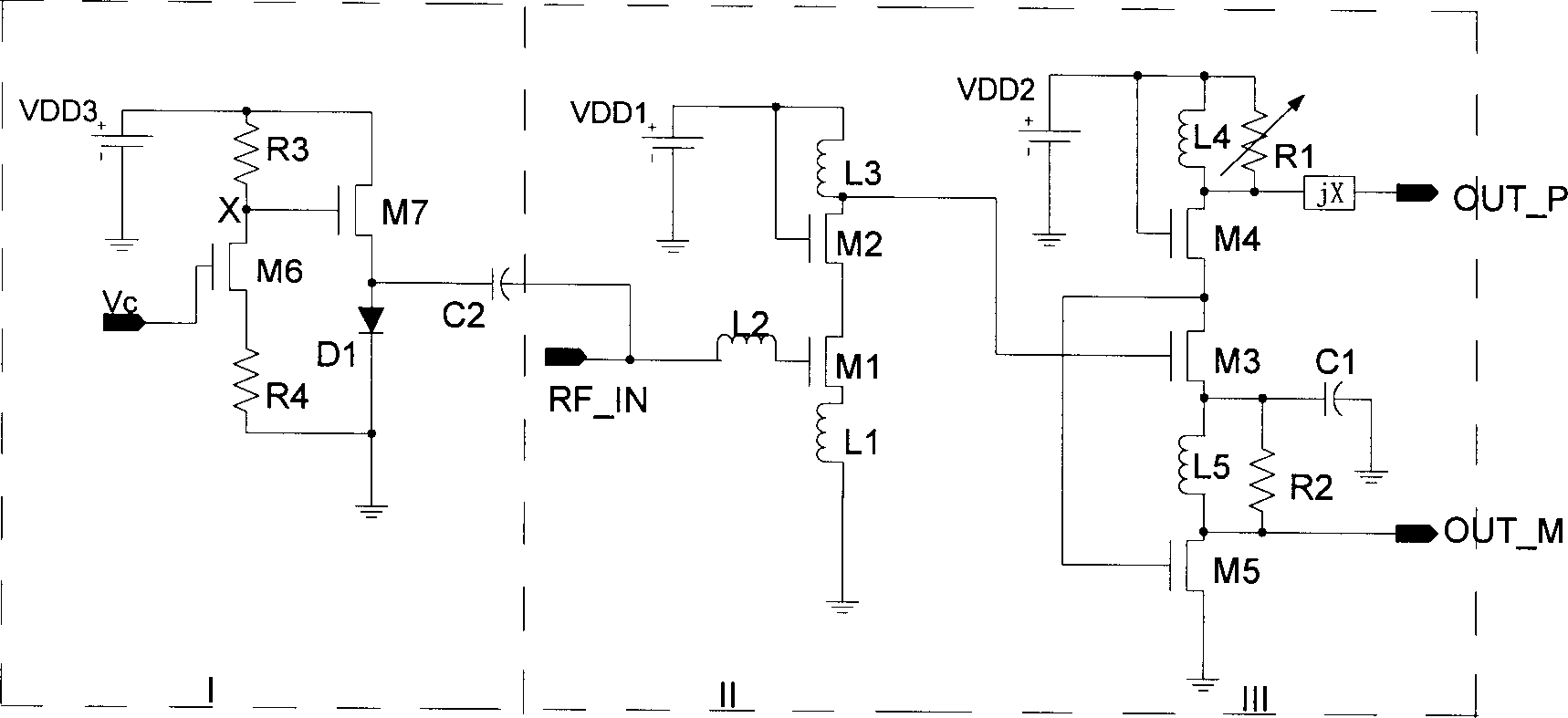Variable-gain single-ended-to-difference radio-frequency low-noise amplifier
A low-noise amplifier and variable gain technology, which is applied in the field of RF low-noise amplifier structure design, can solve problems such as low-noise amplifier difficulties, circuit noise performance degradation, and increase, so as to reduce the number of active devices, eliminate insertion loss, and reduce system noise. Reduced effect
- Summary
- Abstract
- Description
- Claims
- Application Information
AI Technical Summary
Problems solved by technology
Method used
Image
Examples
Embodiment Construction
[0017] The single-ended to differential radio frequency low noise amplifier of variable gain that the present invention proposes is described in detail as follows in conjunction with accompanying drawing and embodiment:
[0018] The radio frequency amplifier that the present invention proposes comprises three parts: main amplifier circuit (Main Amplifier Stage), as figure 2 Shown in the dashed box II; single-ended to differential output buffer (Single-to-Differential Output Buffer), such as figure 2 Shown in the dotted line box III; the variable gain unit (VGA Cell), such as figure 2 Shown in each dotted line box I; The specific circuit structure and connection relationship of each part are described in detail as follows:
[0019] The main amplifier circuit is mainly composed of MOS transistors M1 and M2, inductors L1, L2 and L3, and its connection relationship is: the radio frequency signal RF-IN is input to the gate of M1 through the inductor L2, the source of M1 is grou...
PUM
 Login to View More
Login to View More Abstract
Description
Claims
Application Information
 Login to View More
Login to View More - R&D
- Intellectual Property
- Life Sciences
- Materials
- Tech Scout
- Unparalleled Data Quality
- Higher Quality Content
- 60% Fewer Hallucinations
Browse by: Latest US Patents, China's latest patents, Technical Efficacy Thesaurus, Application Domain, Technology Topic, Popular Technical Reports.
© 2025 PatSnap. All rights reserved.Legal|Privacy policy|Modern Slavery Act Transparency Statement|Sitemap|About US| Contact US: help@patsnap.com



